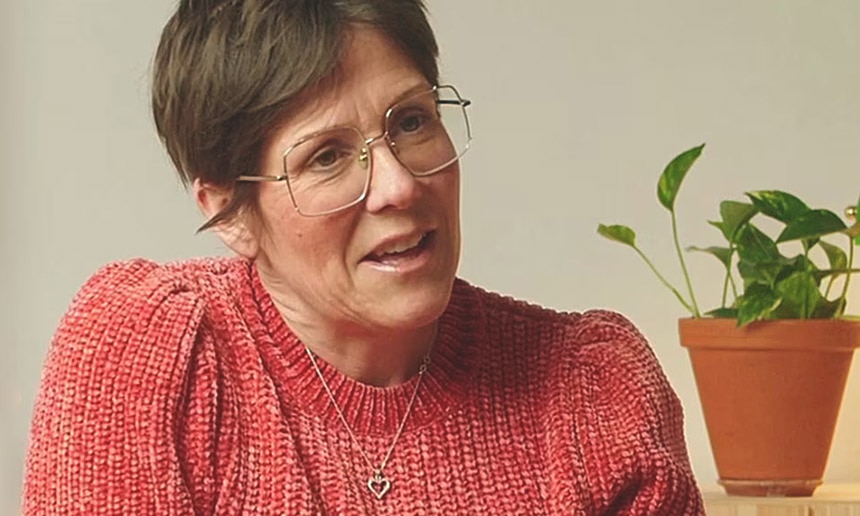Kan man utsette mensen?

Faktagranskad av barnmorska Amelie Jensnäs Joäng
While heavy menstrual bleeding and painful cramps are quite common, they’re not always signs of a normal menstrual cycle.
They could be warning us about adenomyosis, endometriosis, or uterine fibroids. But because these conditions share similar symptoms, they are often confused or misdiagnosed. So, what exactly is adenomyosis and how can we tell it apart?
What causes adenomyosis?
Adenomyosis is a condition where the cells that usually form the uterus lining (also known as the endometrium) grow into the muscle wall of the uterus itself – where they’re not supposed to be. Around 1 in 10 women are affected by adenomyosis, yet a third don’t even realise it.[1]
But, how can that be? Likely, a combination of factors: on one hand, science and medicine haven’t historically paid that much attention to the health issues of women+, leading to underfunding of research to helps us understand conditions like adenomyosis.[2], [3] On the other, the taboos around our V-Zones (the vagina, vulva and V-shaped front of our bodies) feed the belief that they’re actually not something to discuss. For instance, many of us grew up believing that periods weren’t something we should talk about, at least not seriously. Or that we should just learn to deal with them and suffer in silence. Or that even if we did share, others might not understand – it’s just a period, bad cramps are normal and will go away eventually… right? But it doesn’t have to be this way! Just because others can’t physically see the pain, it doesn’t mean it’s not there – your pain is real, and what you feel is valid. This is why talking about adenomyosis matters.
Learning more about this condition can enable you to recognise the symptoms early and seek the proper medical support you need. Or perhaps equip you with the knowledge to support a family member, co-worker, or someone you know who might be dealing with it. So, let’s have a look…
The short answer is that we’re not sure yet. Science hasn’t quite figured out what exactly causes adenomyosis. This is due to a severe lack of medical research that often leaves the condition underdiagnosed.
With little known about it, one theory suggests that adenomyosis happens due to injury to the uterus during childbirth (including C-sections). Another theory proposes that it might be caused by a genetic condition.[4]
Having only barely scratched the surface of what causes adenomyosis, we can only hope the answer is just around the corner.
What causes adenomyosis?
Adenomyosis is a condition where the cells that usually form the uterus lining (also known as the endometrium) grow into the muscle wall of the uterus itself – where they’re not supposed to be. Around 1 in 10 women are affected by adenomyosis, yet a third don’t even realise it.[1]
What causes adenomyosis?
Adenomyosis is a condition where the cells that usually form the uterus lining (also known as the endometrium) grow into the muscle wall of the uterus itself – where they’re not supposed to be. Around 1 in 10 women are affected by adenomyosis, yet a third don’t even realise it.[1]
What causes adenomyosis?
Adenomyosis is a condition where the cells that usually form the uterus lining (also known as the endometrium) grow into the muscle wall of the uterus itself – where they’re not supposed to be. Around 1 in 10 women are affected by adenomyosis, yet a third don’t even realise it.[1]
What causes adenomyosis?
Adenomyosis is a condition where the cells that usually form the uterus lining (also known as the endometrium) grow into the muscle wall of the uterus itself – where they’re not supposed to be. Around 1 in 10 women are affected by adenomyosis, yet a third don’t even realise it.[1]
Vanliga frågor
-
Ja, sopp i underlivet går ofte bort av seg selv. Du kan hjelpe til ved å vaske undertøyet på 60 grader, slik at soppsporene dør, og sove uten truse for å lufte huden.
-
Sopp kan gjøre at underlivet får en søtlig lukt.
-
Sopp i underlivet kan gå over av seg selv. Det tar vanligvis en ukes tid. Hvis soppen ikke forsvinner, finnes det reseptfrie legemidler som fås kjøpt på apoteket.
-
Nei, sopp i underlivet er ikke farlig. Det er veldig vanlig, og de aller fleste får det i løpet av livet.
-
Sopp i underlivet kan gå over av seg selv. Hvis det ikke skjer, kan du prøve et reseptfritt legemiddel fra apoteket. Fungerer ikke det heller, bør du oppsøke helsehjelp.
Utforsk mer

Bli medlem - få 10% rabatt
Gå med i Club Libresse för att få tips och råd kring menscykeln, och var bland de första att få veta om våra nya släpp, tävlingar och kampanjer! Dessutom får du 10% rabatt på menstrosor och menskoppar i vår e-handel*

Medisinsk ansvarsfraskrivelse
Informasjonen på denne siden er lest og godkjent av Libresses jordmor, Amelie Jensnäs Joäng. Den medisinske informasjonen i denne artikkelen er imidlertid bare ment til informasjonsformål og må ikke brukes til å stille diagnoser eller gi behandling. Rådfør deg alltid med lege for å få informasjon om spesifikke helsetilstander.